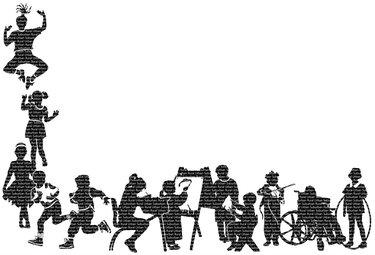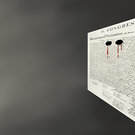Let us find common ground illuminated by shared truths
Several of those who packed the Voorheesville School Board meeting hall this month said it was “a teachable moment.”
We thought that was a generous view from a group of people who felt slighted, or worse. But it led us to wonder what was to be learned and by whom.
A group of about 50 Albany city school supporters had traveled to the suburbs because of comments they had read in our newspaper, spoken by the school board president, Timothy Blow.
The comments were made in April as the board listened to a request from parents of students in a large middle-school grade asking for smaller classes next year; the board at the same time was planning to add programs to the high school like Project Lead the Way engineering courses.
“To me, class size doesn’t come before enrichment. This is not Albany City Schools. This is Voorheesville,” Blow had said. “We have good teachers. We have good students. Class size is the cherry on the sundae. Enrichment is the meat and potatoes.”
At the May meeting, Blow ostensibly apologized to the group for his comments. He alternately defended his words and said they were inaccurately reported. We were grateful that parents who had been at the April meeting confirmed the accuracy of the quotes. Bearing witness is part of what we do as a newspaper.
We were disappointed that Blow didn’t own his words. Had he done so, the learning from “the teachable moment” might have begun. The superintendent, Brian Hunt, read a carefully worded release, stating that both Albany and Voorheesville agreed there “was no malicious intention” behind Blow’s words.
Sue Adler, vice president of the Albany School Board, speaking as a parent, aptly said she’d never thought there was malicious intent. Rather, she likened it to “institutional bias or institutional racism,” which Adler said she had experienced herself as a Jew living in the South.
“We should never be a cautionary tale for others,” she said of Albany schools, and referenced “the soft bigotry of low expectations.”
Blow’s words had raised no red flags for the Voorheesville superintendent. All was quiet on the suburban front. The only letter our paper received critical of Blow’s comments came from an Albany teacher.
Meanwhile, a firestorm was brewing in Albany. That shows the chasm between the two communities — only a few miles away from each other, yet worlds apart.
Blow responded there was never any intended or unintended bias in what he said; rather, he was “solely speaking of Albany as an urban district,” he said. “We’re a suburban district. We have different priorities putting together a budget.”
Adler’s son, Hilly, an Albany High School graduate now at Harvard, described some of his Ivy League classmates as “sheltered,” contrasting that with the diverse world he learned how to navigate in high school.
“I can see how much they still have to learn…It’s tough for them to understand what life is like for someone else,” said Hilly Adler, concluding, “The first step is not to characterize ‘the other.’ Nothing about ‘urban’ should be different than ‘suburban,’” he told Blow.
His words transported us back to our own college years at Wellesley as we were caught up in the second wave of feminism. We read Simone de Beauvoir’s “Le Deuxième Sexe’’ from cover to cover and, decades later, passed on the well-worn books to our daughter.
Beauvoir analyzes centuries of literature to show how a woman is defined as l’autre — the other. Other is defined in the “way the One chooses to posit himself,” she writes. To be part of a gender that had for centuries been defined as “other” — to be oppressed in that way, even those of us who were what Beauvoir called the “privileged other” — was cause to make our female voices heard to try to change the course of history. Getting the right to vote — an accomplishment of the first wave of feminism — wasn’t enough.
One of the reasons we became a journalist was because we believe that by telling people’s stories truthfully others can learn to understand the common humanity we share.
We were invited years ago, as an editor of this newspaper, to be part of a panel at the University at Albany where the dominant belief in that discussion was that each part of society had its own reality. What was true for one group wasn’t for another.
One woman on the panel spoke for the black community in Albany whose voices are sometimes ignored. A man on the panel spoke for mentally ill people whose voices are often misunderstood if they are even listened to seriously. A third panelist, head of an archaeological firm, trumped the other two in speaking for Native American societies oppressed to extinction; she had to dig up their remains to piece together their stories.
We disagreed with all of them. We believed then, and believe even more fervently now, that there can be common ground for human beings, illuminated by shared truths. A good newspaper can bridge the divide.
Yes, every person is an individual. Yes, those of some races, of some genders, with some illnesses, of some religions have been oppressed. Yes, each of us no doubt harbors prejudices shaped by our own experiences in the world.
But we share a common humanity. If we’re strong enough to look at our biases and own them, we can learn to understand and accept those who are different from us.
Our story on Blow’s comments included 2015 data from the State Education Department on some differences between the Voorheesville and Albany schools.
As the city speakers pointed out, Albany schools are far more diverse: Half of the students are black, 21 percent are white, 16 percent are Hispanic, 9 percent are Asian, and 4 percent are multi-racial. At Voorheesville, 91 percent are white, 3 percent are Asian, 2 percent are Hispanic, 2 percent are multi-racial, and 1 percent are black.
This means, as Hilly Adler pointed out, Albany High students have a chance every day to understand people different than themselves. A Voorheesville mother of four countered him at the meeting, saying it is unfair to stereotype suburbanites as sheltered; she said she works to expose her children to different things and to people of different races. That may be laudable but visiting diversity is different than living in a diverse culture.
The much larger Albany district, with 8,391 students, faces more poverty with 57 percent of its students eligible for free lunches. Voorheesville, with 1,168 students, has 7 percent eligible for free lunch. In 2015, fifty-three percent of Albany students graduated, 14 percent with advanced Regents diplomas; at Voorheesville, 96 percent of the class graduated, 45 percent with advanced Regents diplomas.
There are no surprises here. Study after study has shown that students with well-off and well-educated parents generally fare better in school. This doesn’t mean that poor kids can’t be bright and hardworking, nor does it mean that parents with low incomes aren’t good and caring parents.
What it does mean is that schools serving low-income families generally have to work harder and offer more services to try to fill the gaps that aren’t filled at home.
For just one example, picture a single mother working long hours to support her children; let’s say one of her children is dyslexic and struggling with reading. She may not have the time to devote the extra hours to help that child nor the funds to hire a tutor — means that her wealthier suburban counterpart might have.
Multiply that by many students in need. Facts like these might lead Blow, or anyone else, to argue that a wealthy district could sacrifice small class sizes. But no disparaging reference to Albany schools was needed.
Albany students responded just as they should have to what Adler termed “the soft bigotry of low expectations.” They raised their voices and told their stories. They made people in the room that night, and we hope the larger audience that reads our newspaper, understand who they are and why their school is a good one.
“We have good teachers; we have good students,” 14-year-old Rylyn Swierzewski told Blow, echoing the very words he had used to describe Voorheesville. “It hurts students,” she told us after the meeting of Blow’s words and why she spoke up.
“We don’t get enough recognition for who we are…The stereotypes don’t help us…Pull us up,” urged Anni-Maxine Quaye, a junior in the International Baccalaureate program at Albany High. “Don’t bring us down because, in the end, we’re the ones that are going to have to take care of you.”
Yes, Anni-Maxine Quaye, you are right; we need to take care of each other.
— Melissa Hale-Spencer


